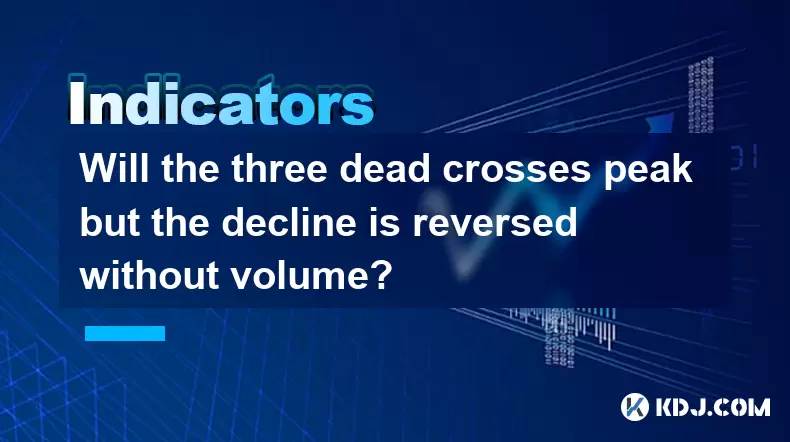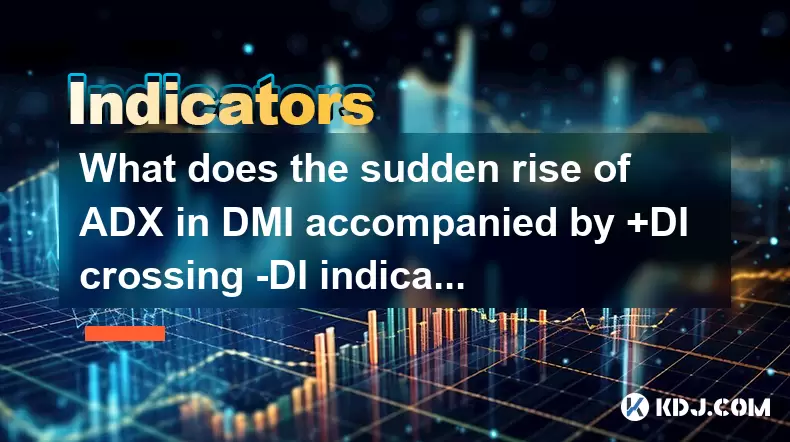-
 Bitcoin
Bitcoin $117400
1.93% -
 Ethereum
Ethereum $3747
3.63% -
 XRP
XRP $3.157
3.09% -
 Tether USDt
Tether USDt $1.000
0.02% -
 BNB
BNB $783.3
3.19% -
 Solana
Solana $186.6
5.64% -
 USDC
USDC $0.9999
0.01% -
 Dogecoin
Dogecoin $0.2375
5.42% -
 TRON
TRON $0.3185
1.32% -
 Cardano
Cardano $0.8191
3.28% -
 Hyperliquid
Hyperliquid $44.43
5.76% -
 Sui
Sui $3.995
9.84% -
 Stellar
Stellar $0.4396
6.27% -
 Chainlink
Chainlink $18.26
4.83% -
 Hedera
Hedera $0.2646
11.88% -
 Bitcoin Cash
Bitcoin Cash $553.5
5.55% -
 Avalanche
Avalanche $24.13
4.73% -
 Litecoin
Litecoin $113.3
1.77% -
 UNUS SED LEO
UNUS SED LEO $8.975
0.11% -
 Shiba Inu
Shiba Inu $0.00001405
5.69% -
 Toncoin
Toncoin $3.319
7.46% -
 Ethena USDe
Ethena USDe $1.001
0.02% -
 Uniswap
Uniswap $10.44
4.98% -
 Polkadot
Polkadot $4.098
4.31% -
 Monero
Monero $328.6
1.87% -
 Dai
Dai $1.000
0.01% -
 Bitget Token
Bitget Token $4.561
2.76% -
 Pepe
Pepe $0.00001261
5.29% -
 Aave
Aave $296.8
4.02% -
 Cronos
Cronos $0.1335
3.28%
Will the three dead crosses peak but the decline is reversed without volume?
The "three dead crosses" pattern signals potential bearish reversal in crypto when 5, 10, and 20-day EMAs cross down sequentially, but requires volume and context for confirmation.
Jul 25, 2025 at 11:56 pm

Understanding the "Three Dead Crosses" Pattern in Cryptocurrency Trading
The three dead crosses pattern is a bearish reversal signal observed in technical analysis, particularly within the cryptocurrency market. This formation occurs when three key moving averages—typically the 5-day, 10-day, and 20-day exponential moving averages (EMAs)—cross downward in succession, indicating a shift from bullish to bearish momentum. Traders interpret this as a potential sign that an uptrend has exhausted itself. The term "dead cross" refers to the downward crossover of a shorter-term moving average below a longer-term one. When three such crossovers happen closely together, the bearish implication intensifies. However, the reliability of this signal depends heavily on accompanying factors such as volume, price action, and broader market context.
The Role of Volume in Confirming Bearish Reversals
Volume is a critical component in validating any technical pattern, including the three dead crosses. In a typical bearish reversal, declining prices should be accompanied by increasing volume, signaling strong selling pressure and genuine market conviction. When volume is low during a downward crossover, the signal becomes suspect. A lack of volume suggests that the selling is not widespread or urgent, which may indicate that the move is driven by profit-taking rather than a fundamental shift in sentiment. In the cryptocurrency market, where low liquidity can exaggerate price movements, volume analysis is even more crucial. A peak followed by three dead crosses without significant volume may reflect a temporary pullback rather than a sustained downtrend.
Analyzing Price Action During the Formation
Even in the absence of volume confirmation, price action surrounding the three dead crosses must be scrutinized. If the price reaches a new high just before the crossovers but fails to close significantly below key support levels, the bearish signal weakens. Key levels to monitor include:
- The most recent swing high
- The 50% Fibonacci retracement level
- Previous resistance zones that have turned into support
If the price stabilizes near these levels after the crossovers, it may indicate that buyers are still active. Additionally, the presence of bullish candlestick patterns—such as hammer, engulfing, or morning star formations—can suggest that the decline is losing momentum. In such cases, the three dead crosses may represent a pause in the uptrend rather than a full reversal.How to Evaluate Market Context and Sentiment
The broader market environment plays a decisive role in interpreting the three dead crosses. During a strong bull market in cryptocurrencies, short-term bearish signals often fail to trigger sustained declines. Factors to consider include: - Overall trend of major cryptocurrencies like Bitcoin and Ethereum
- Performance of the total cryptocurrency market capitalization
- On-chain metrics such as exchange outflows and active addresses
- News events, regulatory developments, or macroeconomic conditions
If the broader market remains bullish and on-chain data shows accumulation, a volume-deficient three dead cross pattern is more likely to be a false signal. Conversely, if negative sentiment is building across social media, trading platforms, and news outlets, even low-volume crossovers could gain momentum over time.Practical Steps to Assess the Validity of the Signal
To determine whether the three dead crosses will lead to a reversal or a continuation of the uptrend, traders should follow these steps: - Confirm the crossover sequence by checking the daily charts for the 5 EMA crossing below the 10 EMA, followed by the 10 EMA crossing below the 20 EMA
- Analyze volume trends during each crossover using the volume histogram; look for spikes that coincide with the downward moves
- Compare current volume to the average volume over the past 20 days; if volume is below average, the signal is weaker
- Monitor price reaction at key support levels after the crossovers occur
- Use additional indicators such as RSI (Relative Strength Index) or MACD to assess momentum; divergence can provide early clues
- Watch for re-crossover signals, where shorter EMAs move back above longer ones, indicating potential recovery
Common Misinterpretations and How to Avoid Them
Many traders misinterpret the three dead crosses as a definitive sell signal without considering context. One common mistake is acting solely on the crossover without verifying volume or price structure. Another is ignoring the time frame; the pattern on a 4-hour chart carries less weight than on a daily chart. Some traders also confuse this with the "golden cross" inverse, leading to incorrect assumptions. To avoid these pitfalls: - Always cross-reference with higher time frame charts
- Use volume profile tools to identify whether selling is concentrated or diffuse
- Avoid making large position changes based on a single indicator
- Set stop-loss orders to manage risk if acting on the signal
Frequently Asked Questions
Can the three dead crosses occur in a sideways market?
Yes, the three dead crosses can appear during consolidation phases. In such cases, the crossovers may not indicate a true reversal but rather reflect choppy price action. The lack of directional momentum often results in false signals, especially if volume remains flat.Is the three dead crosses pattern more reliable in Bitcoin than in altcoins?
Generally, the pattern holds more weight in high-cap, liquid assets like Bitcoin due to more reliable volume data and broader market participation. In low-cap altcoins, manipulative trading can produce fake crossovers, making the signal less trustworthy.What time frames are best for identifying this pattern?
The daily and weekly charts provide the most reliable context for the three dead crosses. Shorter time frames like 1-hour or 4-hour charts generate too many false signals due to noise and volatility.How long should traders wait before concluding the reversal has failed?
There is no fixed duration, but a common approach is to observe whether the price regains and sustains above the 20 EMA within 3 to 5 trading sessions. If it does, the bearish signal may have been invalidated.
Disclaimer:info@kdj.com
The information provided is not trading advice. kdj.com does not assume any responsibility for any investments made based on the information provided in this article. Cryptocurrencies are highly volatile and it is highly recommended that you invest with caution after thorough research!
If you believe that the content used on this website infringes your copyright, please contact us immediately (info@kdj.com) and we will delete it promptly.
- Wall Street's Bitcoin Bonanza: ETF Filings Signal Crypto's Coming-Out Party
- 2025-07-26 15:10:12
- Bitcoin, Cynthia Lummis, and Freedom Money: A New York Perspective
- 2025-07-26 15:10:12
- UK Tech, Bitcoin, and Investment: Decoding the Latest Trends
- 2025-07-26 15:30:11
- UK Crypto Regulation: Will Bitcoin Access Open Up for Retail Investors?
- 2025-07-26 15:30:11
- ChatGPT, Binance Coin, Price Prediction: BNB's Bullish Outlook in 2025?
- 2025-07-26 15:35:12
- Citigroup's Bitcoin Forecast: $135K by 2025 – Are They Right?
- 2025-07-26 15:35:12
Related knowledge

What does it mean that the rebound is blocked after the moving average is arranged in a short position for the first time?
Jul 26,2025 at 10:51am
Understanding the Short-Term Moving Average ConfigurationWhen traders refer to a 'short position arrangement' in moving averages, they are describing ...

What does it mean when the price rises along the 5-day moving average for five consecutive days?
Jul 26,2025 at 08:07am
Understanding the 5-Day Moving Average in Cryptocurrency TradingThe 5-day moving average (5DMA) is a widely used technical indicator in cryptocurrency...

What does it mean when the price breaks through the 60-day moving average with a large volume but shrinks the next day?
Jul 26,2025 at 06:01am
Understanding the 60-Day Moving Average in Cryptocurrency TradingThe 60-day moving average (60DMA) is a widely used technical indicator in the cryptoc...

What does the sudden rise of ADX in DMI accompanied by +DI crossing -DI indicate?
Jul 26,2025 at 01:21pm
Understanding the DMI and Its Core ComponentsThe Directional Movement Index (DMI) is a technical analysis tool used to determine the presence and stre...

What does it mean when OBV continues to hit new highs but the price is stagnant?
Jul 26,2025 at 09:57am
Understanding the On-Balance Volume (OBV) IndicatorThe On-Balance Volume (OBV) is a technical analysis indicator that uses volume flow to predict chan...

What does the golden cross of EMA12 and EMA26 but the low trading volume reflect?
Jul 26,2025 at 06:44am
Understanding the Golden Cross in EMA12 and EMA26The golden cross is a widely recognized technical indicator in the cryptocurrency market, signaling a...

What does it mean that the rebound is blocked after the moving average is arranged in a short position for the first time?
Jul 26,2025 at 10:51am
Understanding the Short-Term Moving Average ConfigurationWhen traders refer to a 'short position arrangement' in moving averages, they are describing ...

What does it mean when the price rises along the 5-day moving average for five consecutive days?
Jul 26,2025 at 08:07am
Understanding the 5-Day Moving Average in Cryptocurrency TradingThe 5-day moving average (5DMA) is a widely used technical indicator in cryptocurrency...

What does it mean when the price breaks through the 60-day moving average with a large volume but shrinks the next day?
Jul 26,2025 at 06:01am
Understanding the 60-Day Moving Average in Cryptocurrency TradingThe 60-day moving average (60DMA) is a widely used technical indicator in the cryptoc...

What does the sudden rise of ADX in DMI accompanied by +DI crossing -DI indicate?
Jul 26,2025 at 01:21pm
Understanding the DMI and Its Core ComponentsThe Directional Movement Index (DMI) is a technical analysis tool used to determine the presence and stre...

What does it mean when OBV continues to hit new highs but the price is stagnant?
Jul 26,2025 at 09:57am
Understanding the On-Balance Volume (OBV) IndicatorThe On-Balance Volume (OBV) is a technical analysis indicator that uses volume flow to predict chan...

What does the golden cross of EMA12 and EMA26 but the low trading volume reflect?
Jul 26,2025 at 06:44am
Understanding the Golden Cross in EMA12 and EMA26The golden cross is a widely recognized technical indicator in the cryptocurrency market, signaling a...
See all articles

























































































